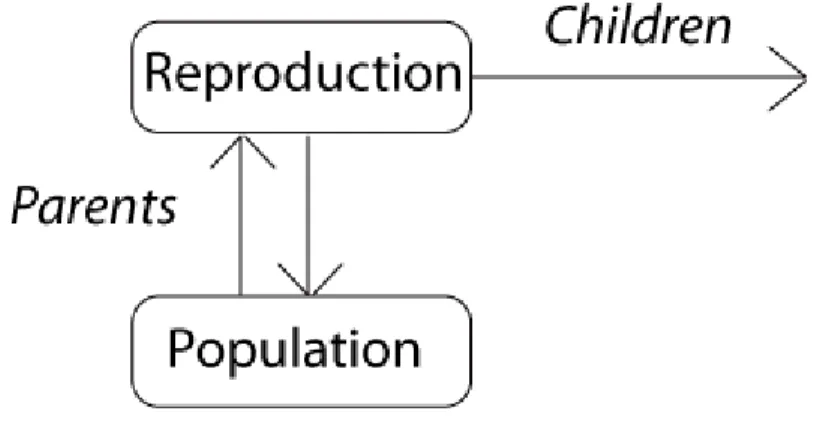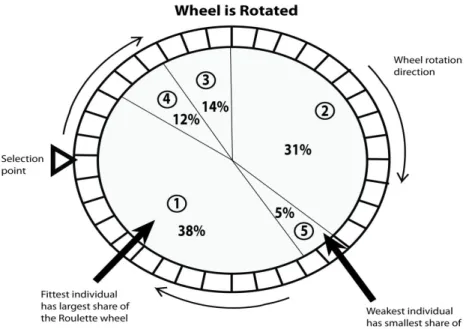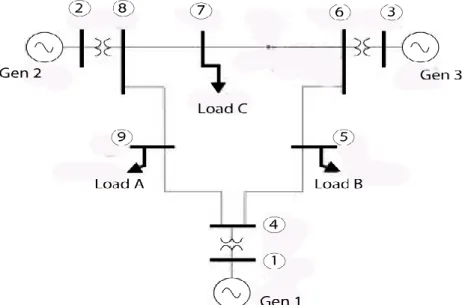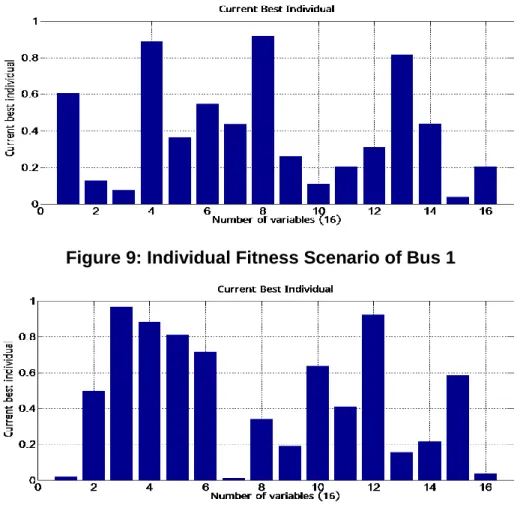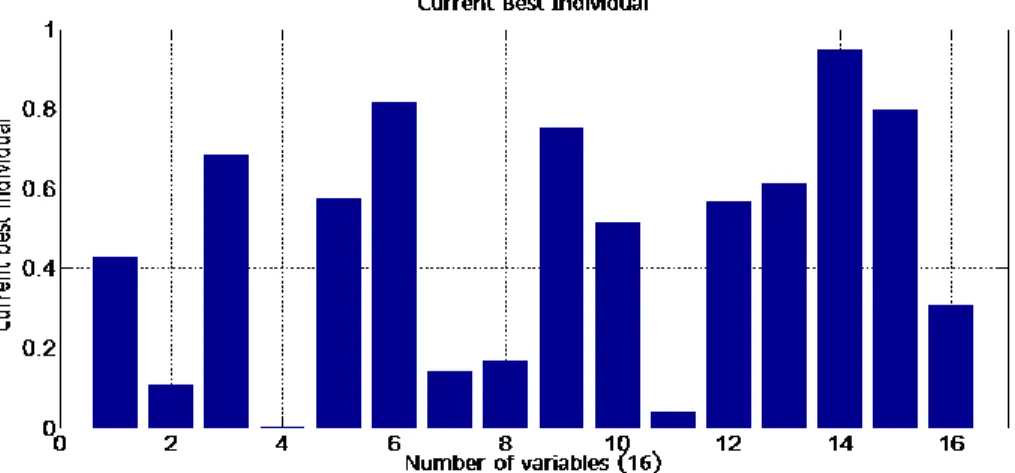The thesis entitled ―Network Flow Optimization by Genetic Algorithm and Load Flow Analysis by Newton Raphson Method in Power System‖ submitted by Fahmid Iftekher Ali, Monjurul Alam Rizvi and Razuan Hossain to the was accepted as satisfactory to the and approved for its style and content. This thesis is the accumulation of our work on the Optimal Power Flow problem of Power System in the last one year. We take this opportunity to express our gratitude to everyone who has supported us over the years.
Here, our aim is to simulate the objective function to get the optimal power flow within the optimization cost and also to do the load flow analysis of the system. There are also several methods to analyze the load current, for example, Fast Separated method, Newton Raphson method, bisection method, secant method, misposition method, etc. Among them, we chose the genetic algorithm method for optimization and the Newton Raphson method for load flow analysis. .
And here we have also taken an approach to find out the load flow analysis by simulating a program in which we have shown the generation, injection into the buses and also the system losses etc.
Introduction
- Background
- Assumptions and Limitation
- Objectives
- Outline of the paper
OPF determines current, voltage and power injected through an electrical power system, like conventional power flow analysis. Regardless of the name, a set of power flow equations in the constraints is included by optimization problem of any power system can be classified as a form of OPF. Due to the advancement of the OPF solution techniques, effective optimal power flow is limited by.
Power Flow (GAOPF) problem is solved based on the use of a genetic algorithm load flow. In this paper, we develop a simple genetic algorithm applied to the problem of optimal power flow in large power distribution systems. In the power system grid, power flow controller is also used such as unified power flow controller (UPFC), thyristor switched capacitor (TSC), thyristor controlled series capacitor (TCSC), thyristor controlled rectifier (TCR) etc. but in our thesis we have not considered that power flow controller.
The main objectives of this work are to minimize energy system costs and maximize energy flow.
Literature Review
General Discussion
The optimization technique is used to minimize the cost or facility through the objective function considering equality and inequality constraints. Planning civil engineering works such as bridges, buildings, chimneys, towers for cost reduction. Schematic of pump, turbine, heat transfer devices to maximize power flow in the system.
Monitoring the working time and waiting of the production line to reduce the cost of production.
Optimal power flow analysis
- Classical Optimization Techniques
- Numerical Methods of Optimization
- Advanced Optimization Techniques
- Simulated annealing Techniques
- Quadratic Programming (QP) method
- Nonlinear Programming (NLP) method
- Interior Point (IP) method
- Artificial Intelligence (AI) methods
- Why we use GA for cost optimization??
Linear programming: give an event where the objective function f is linear and the set A, which is considered the design variable space, is specified using only linear equality and inequality. Combinatorial optimization: which deals with problems where the set of feasible solutions is discrete or reducible to a discrete one. Hill Climbing: It is a graph search algorithm technique where the current path is extended by a successor node which is closer to the solution than the end of the current path.
Considered a subfield of optimization, convex minimization deals with the minimization of a convex function over convex sets. It is quite similar to genetic programming, but the main difference is that the structure of the program being optimized is fixed, while its numerical parameters are allowed to evolve. Ant Colony Optimization (ACO), also known as a probabilistic technique, where the computational problems are reduced to find a good path and a graphical method is used to find the optimal path for the system.
Genetic algorithm optimal power flow (GAOPF) is evaluated based on the use of the GA load flow.
Load flow analysis
- Historical background of power flow analysis
- Gauss-Seidel method
- Newton Raphson Method
- Fast Decoupled Method
- Bisection Method
- Secant Method
- False Position method
- Why we used Newton Raphson method??
Methodology
Genetic Algorithms in Optical Power Flow
Based on the mechanism of natural selection and natural genetics, the genetic algorithms are powerful stochastic search algorithms. Works are laid down by GA with a population of binary string by searching many peaks in parallel. No search methods are flexible enough like GAs because the other search methods require information about the quality of the solution produced by each parameter set (.objective function values) and do not use different optimization methods, which shows the requirement of derived information and it can be complete knowledge of the problem structure and parameters worsens.[9].
The recombination operation divides two strands into segments by randomizing a crossover point to a pair of parents selected from the population, i.e. Mutation is a secondary operator. This prevents the early termination of the algorithm in a local solution. The definition of mutation operator can be stated as a random segment change in a specific string with a low probability of such change.
It is Mutation that adds a random search character to the genetic algorithm, and it is important to avoid that, after a few generations, all possible solutions were very similar to each other. The evaluator is considered the only link between a classical GA and the problem it solves. Deletion is performed by removing a duplicating gene from the chromosome and when the deletion occurs, the effective mutation rate is reduced.
In this process, the bits at the crossover site are erased and randomly generated at the same time. Using the binary coding method, the active generation 9-lead test system would be coded as a binary string of 0's and 1's of different lengths. A score value is associated with a particular solution based on its distance from the optimal solution (smaller distances to the optimal solution mean higher scores).
The value of the cost is then mapped into a fitness value Fit (Pg1, Pg2,Pg3) so that it can fit into the genetic algorithm. A standard GA procedure for solving the optimal energy flow problem is summarized in the diagram of Figure 6.
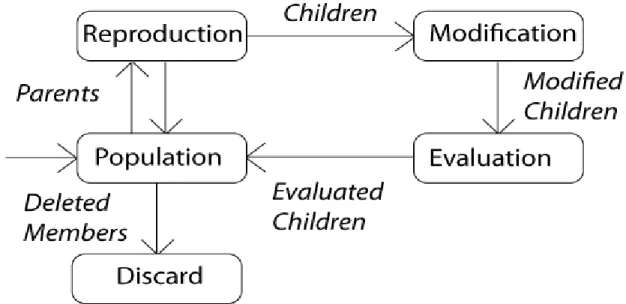
Roulette wheel selection
Load Flow analysis
System Model and Problem Formulation
Model Power system
This IEEE 9-bus test case represents part of the Western System Coordinating Council (WSCC) 3-Machine 9-Bus system.
Problem Formulation
Upper and lower limits for reactive power generation on generator buses and reactive power injection on VAR compensated buses. It can be seen that the generalized objective function F nonlinearly and the number of equality and inequality constraints increase with the size of power distribution systems. The use of conventional optimization techniques such as gradient-based algorithms in large power distribution systems with highly nonlinear objective functions and a large number of constraints is not good enough to solve this problem.
Because it depends on the existence of the first and second derivatives of the objectives of the objective function.
Result and Discussion
- Resolution Factor
- Individual fitness value
- Creating path sequence and summing per unit cost
- Total Cost of the system and maximum power in the buses
- Probability Calculation (Roulette Wheel Method)
- Load Flow analysis by Newton-Raphson method
The value of the cost is then mapped into a fitness value Fit(Pg1, Pg2, Pg3) to fit the genetic algorithm. In this process, the best 3 of the individual fitness value have been selected through a MATLAB using the cost function. The most suitable path will be the combination of the most suitable segment of the power system from bus to bus.
The total transmission cost of the system will be the summation of the individual cost of transmitting power from the three buses to the next destination. So the path that consists of the most suitable path segments has the lowest transmission cost. The Genetic Algorithm uses the iterative process to find the cost of the total energy system.
The data matrix consists of the constants a, b, c along with the minimum and maximum power of the bus. The Newton-Raphson method is one of the classic methods for analyzing the power flow in a power system. Therefore the bus-1 considered one as the reference of the system, bus-2 & 3 are PV bus i.e.
The first step in calculating Newton Raphson's load flow is the formation of the Y-bus matrix. The Y-bus matrix for the 3-machine 9-bus system is the inverse of the system's Z-matrix. The detailed result of the Newton-Raphson power flow analysis is submitted in the supplementary section.
The amount of real and reactive power in the buses exactly matches the theoretical prediction of the parameter. The transmission line flow and loss result section shows the calculated real and reactive power flow in each link of the system.
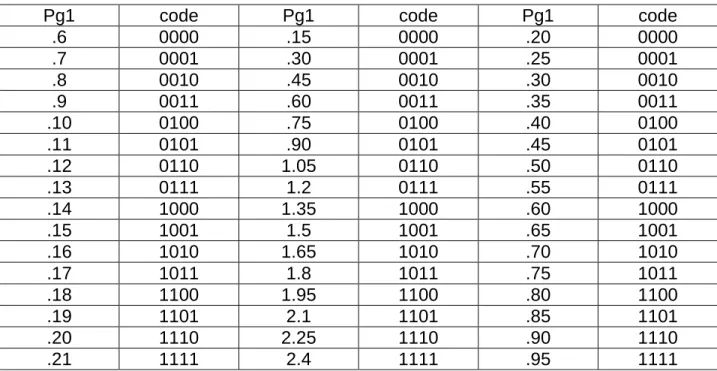
Conclusion
- Individual Fitness Calculation
- Total System Cost by genetic algorithm
- Probability by Roulette Wheel Selection
- Load Flow Analysis by Newton Raphson method
Here we are able to find out the costs per unit for the overall system and also the overall system by genetic algorithm and further reviewed load flow analysis of Newton Raphson model. But here we are not able to find out the load flow analysis using genetic algorithm and total optimization cost of the system by Newton Raphson model. A suggestion for future work in this field of study is to explore the load flow analysis using genetic algorithm and the total optimization cost of the system by Newton Raphson model, by which it will be possible to make a good comparison between both optimization models.
IEEE/PES Power System Stability Subcommittee, Draft Technical Report available at http://www.power.uwaterloo.ca, July 2000. Cañizares, ―Calculation of optimal system parameters to maximize distance to saddle junction bifurcations,‖ IEEE Trans. Cañizares, “Optimization Applications to Voltage Collapse Analysis,” Panel Session, Optimization Techniques in Voltage Collapse Analysis, IEEE/PES Summer Meeting, San Diego, CA, July 1998.
5] Abadie J, Carpentier J (1969) De Wolfe's generalization reduced the gradient method to the case of nonlinear constraints. Zhao Improved Genetic Algorithms for Optimal Power Flow Under Both Normal and Conditional Operating Conditions, Electrical Power &. 11] K.S.Pandya, S.K.Joshi, A Servey of Optimal Power Flow Methods, Journal of Theoretical and Applied Information Technology (JATIT), 2005.
13] T Bouktir, L Slimani, M Belkacemi, A genetic algorithm for solving the optimal power flow problem, Leonardo Journal of Sciences 4, 44-58.
